#The Measure: Hands On with the DJI Mavic Air in Monaco
Following up on the recent announcement of DJI’s latest consumer drone, billed by the market-leading manufacturer as their best consumer drone yet; PhotoBite’s Patrick Wollner took a first quick look at the DJI Mavic Air at its European launch event in Monaco
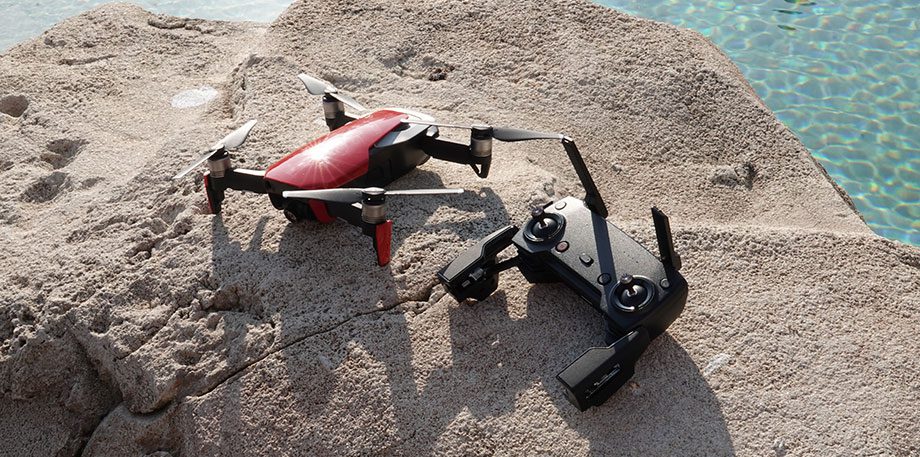
Upon first holding the device, the undisputed stand-out feature is its small size. The DJI Mavic Air’s body is 41% smaller than the Mavic Pro, making its larger and older sibling seem slightly outdated. Even next to the 2017 Spark, the new device is, when folded, significantly more compact. That makes the Air the ideal companion for travel and is the first prosumer-grade drone that will fit in almost any camera bag.
During the initial few test flights, DJI’s spec sheet proved to be spot-on: a flight time of just over 20 minutes [which gives the Air less stamina than the Pro] and top speeds of 70km/h that keep up with most outdoor activities. The image stabilisation is impressively smooth, [even at high speeds] and the camera setup is convincing. Not a surprise, considering that the Air uses the same 1/2.3 inch sensor that has been part of DJI’s consumer product family since the Mavic Pro.
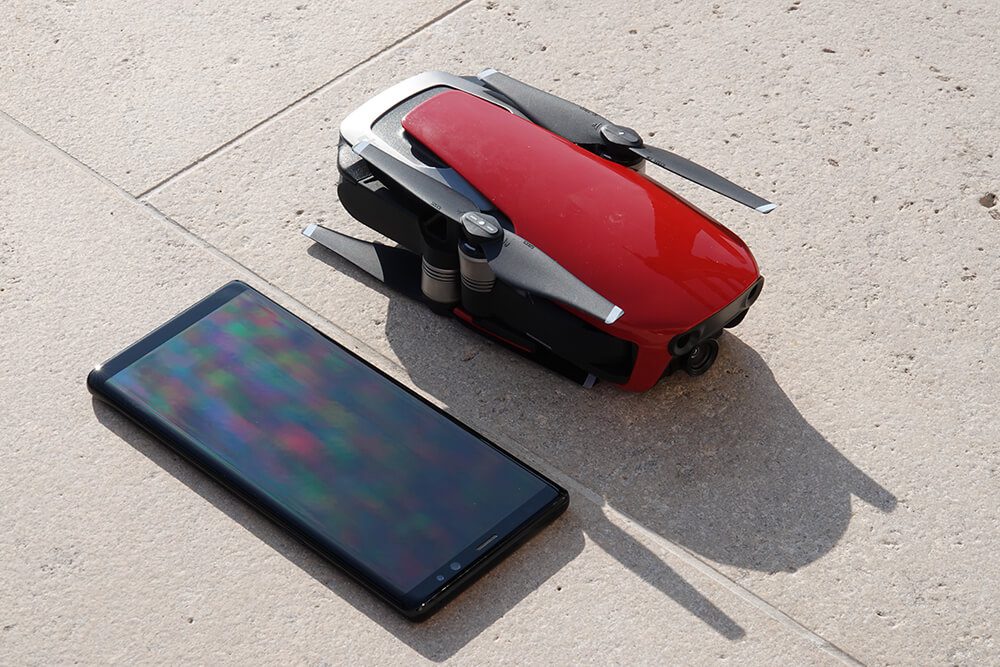
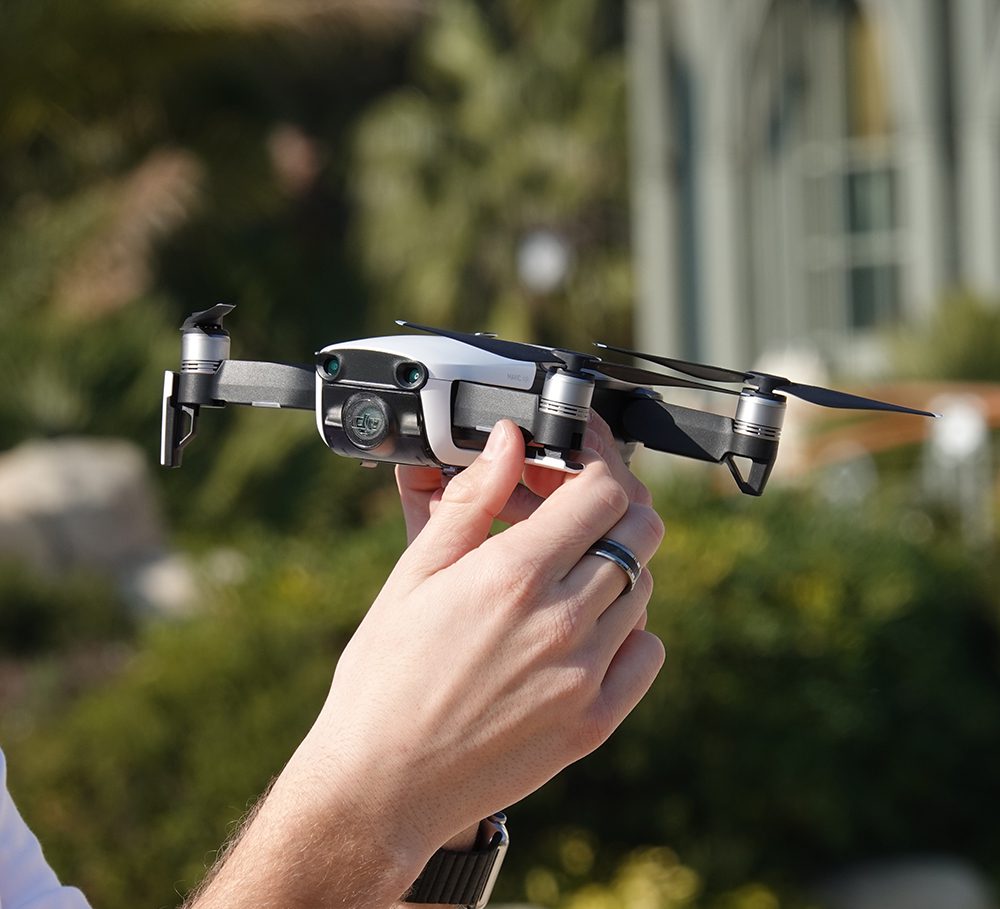
The new image processing system, however, is an improvement that will excite everyone working with a multi-camera workflow: the increased bitrate of 100 MB/s and addition of a 120 fps mode when capturing 1080p extends the list of potential uses of the drone.
The initial set up of the new Mavic Air is straight-forward enough: the prop-arms need to be folded out in the right order [which, admittedly, took a couple of attempts to master] and the flying 4K camera is ready to take off. The chassis seems robust and marks a major step forward in DJI’s overall design language.
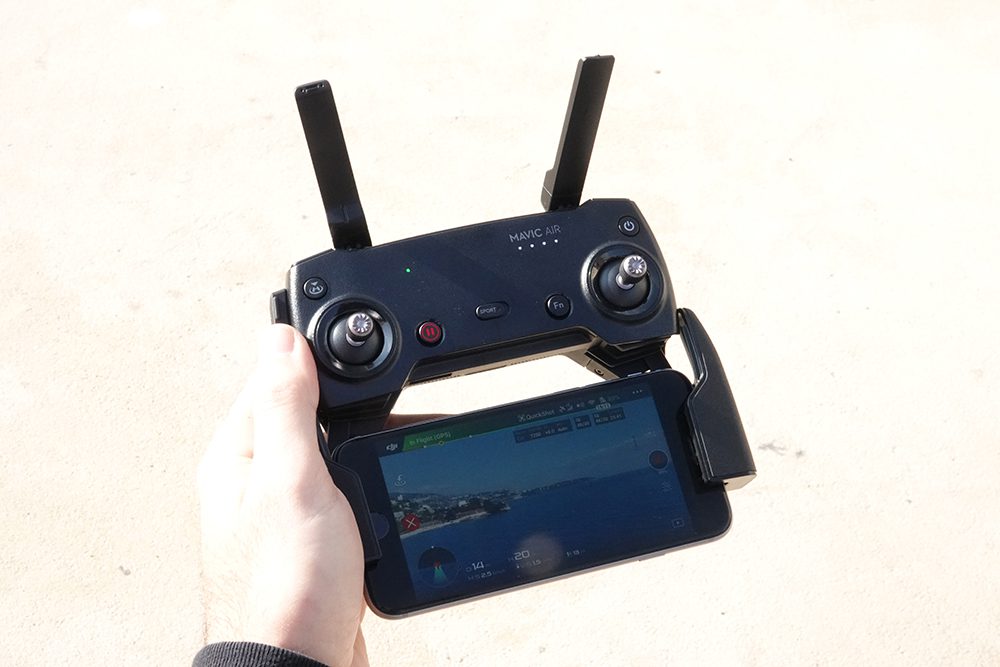
A novelty for the consumer market is the Air’s fixed props, departing from the Spark’s and Pro’s foldable ones. However, that doesn’t make a major difference in portability. When correctly positioned, the props don’t extend beyond the dimensions of the folded body.
Another addition is the new and improved gimbal-guard, which is significantly more forgiving than that of the pro, [but can be a pain to position, at times].
Probably the biggest improvement in portability is the removable joysticks on the remote control; when screwed off, they neatly fit neatly inside the remote, reducing the overall profile by nearly half of its width.
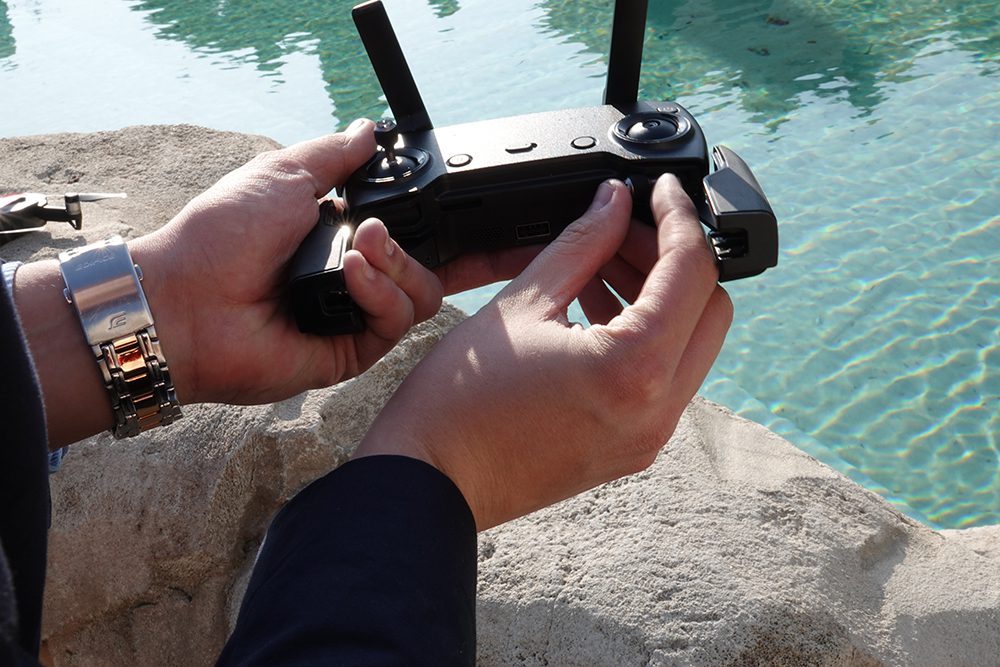
A downgrade from the older and more expensive Mavic Pro is the DJI Mavic Air’s connectivity. The switch from OcuSync to WiFi was noticeable in multiple interference issues at the launch event, which caused the live stream of the camera to be interrupted mid-flight. In DJI’s defence, this could have been a side effect of the many other drones at the event but, with that said, Mavic Pro owners should not expect to experience the same connectivity stability that they currently enjoy. This is also reflected in the spec sheet: the Air only offers 4km of connectivity compared to the Pro’s 7km.
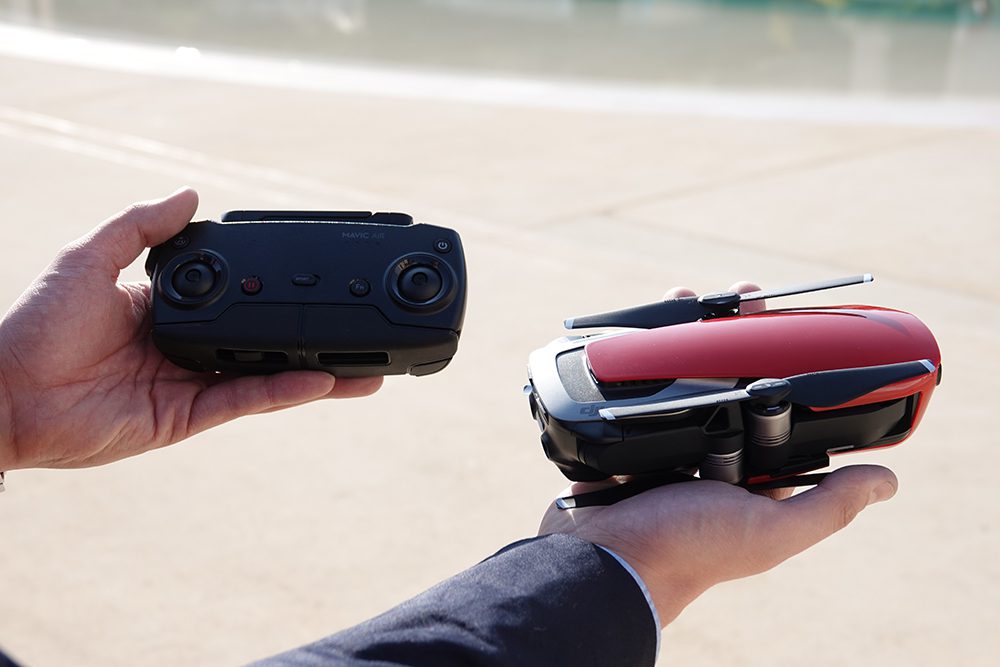
These downsides are countered by significant upgrades in the imaging system of the drone. Apart from the aforementioned changes in bitrate and frame rate, the Mavic Air makes use of a significantly improved control system, advanced sensors and new automatic recording modes, [so-called QuickShot modes].
Additional optical sensors on the DJI Mavic Air allow object detection and avoidance to occur simultaneously in front of, behind and underneath the drone. In practice, these features really mark a departure from the already impressive control system of the Air’s predecessors. The more responsive object avoidance system and advanced flying modes using the built-in autopilot were immediately noticeable on the maiden test flight.
Equally noticeable in the DJI Mavic Air is the upgraded hand gesture mode that was first introduced with the DJI spark. The new camera setup allows the gestures to be interpreted more reliably and widens the applications that can be controlled using gestures. In a quick first flight, the drone managed to take off, capture video, fly back and forwards, follow the pilot and land without misinterpreting a single gesture and without touching the remote. Compared to the Spark, this marks a major improvement and suggests a pathway for all future consumer drones from DJI.
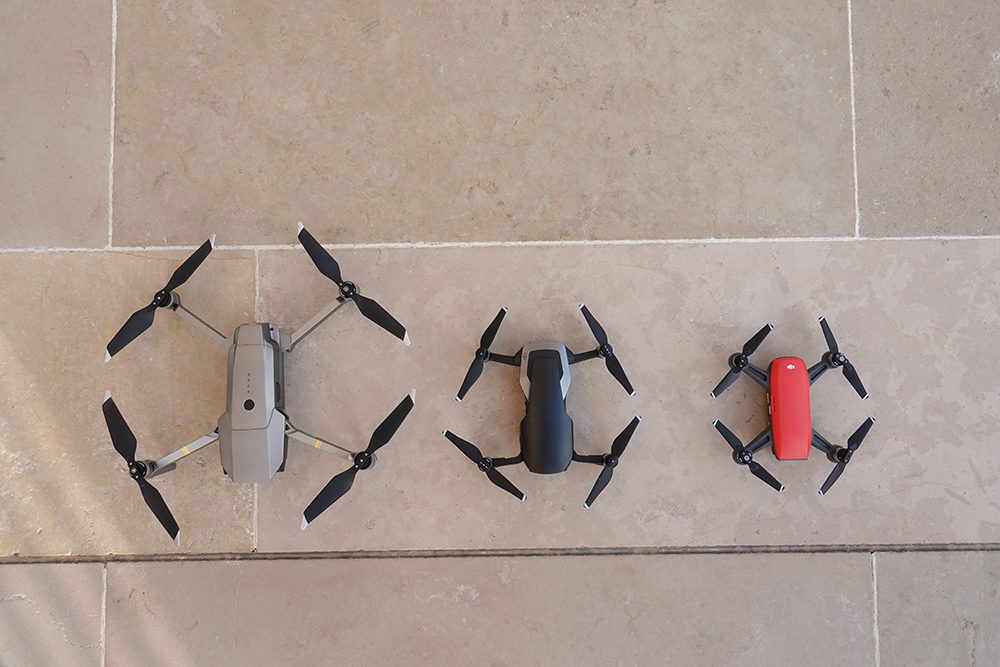
Finally, the new QuickShot modes are a practical addition, allowing hobbyists to capture cinematic moments without the benefit of drone pilot experience, [or effort]. The boomerang mode makes the drone fly in an oval trajectory around the pilot, returning to him or her automatically. Asteroid [see video] directs the drone straight up into the sky and generates a 360-degree photo out of multiple shots which are automatically stitched and animated.
Apart from shooting surprisingly good 12-megapixel JPGs and RAWs, the Air can also be instructed up to record one of four panorama types, ranging from vertical images [for buildings], to horizontal panoramas as well as a spherical panorama that provides a full birds-eye view.

Overall, the new DJI drone is worth buying. Its compact size, great image quality and autonomous features make it particularly attractive to professionals on-the-go. Nonetheless, owners of the Mavic Pro will, unless the size and weight of the drone are a critical issue, not switch to the Air. Beginners and owners of larger, older drones, however, will be very tempted to record their next cinematic masterpiece using DJI’s newest flagship model.
Watch our [short] test flight footage of the DJI Mavic Air below:
Visit DJI for more information


